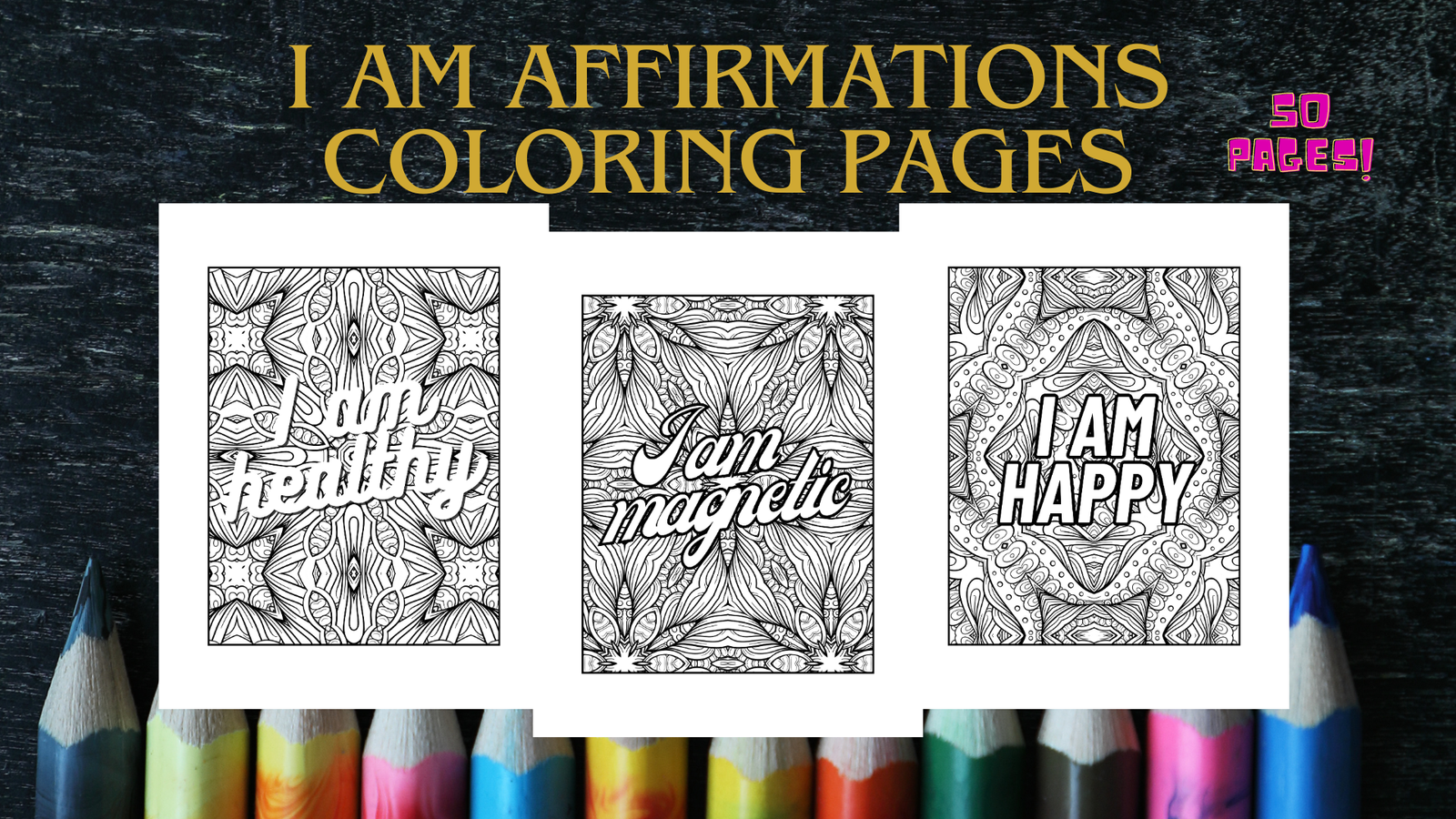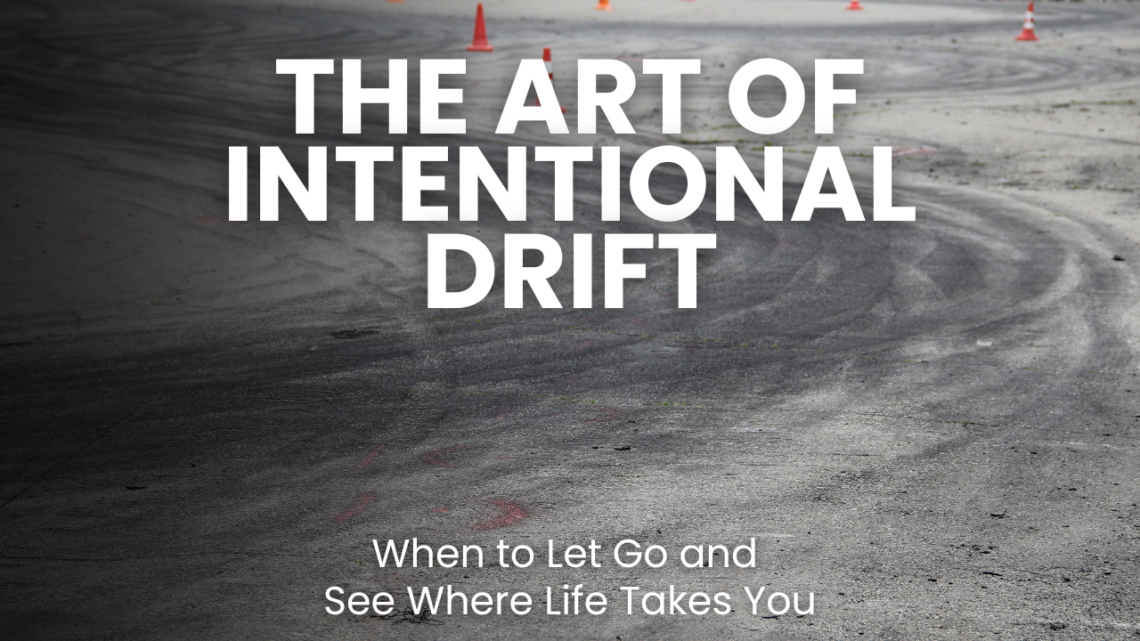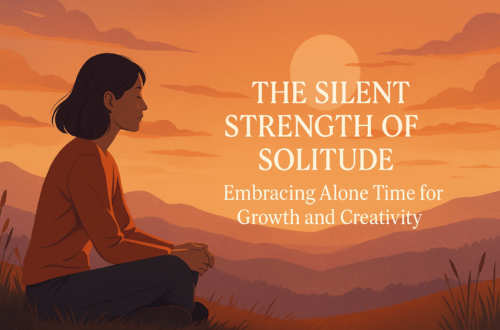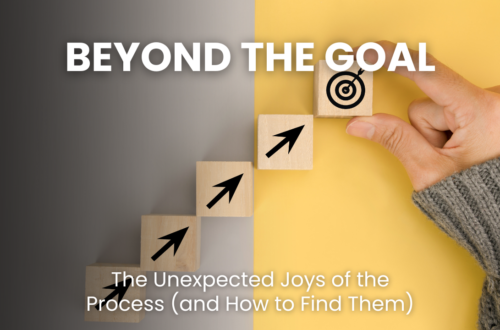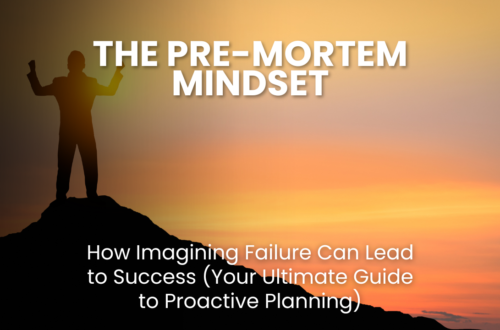In a world obsessed with meticulous planning, relentless goal-setting, and the unwavering pursuit of predefined objectives, the idea of “letting go” can feel almost rebellious. We’re taught from a young age that success is a direct result of clear intentions, disciplined effort, and a roadmap precisely charted from point A to point B. And while there’s undeniable merit to such an approach, what if we’re missing a crucial, often counter-intuitive, element of a rich and fulfilling life? What if, sometimes, the greatest leaps forward come not from gripping the reins tighter, but from consciously, mindfully, and intentionally drifting?
This isn’t about aimless wandering or abandoning all ambition. Far from it. The art of intentional drift is a sophisticated practice of releasing control, fostering openness to serendipity, and creating space for the unexpected to unfold. It’s about understanding that some of life’s most profound discoveries, innovative ideas, and meaningful connections emerge from paths untaken, opportunities unforeseen, and moments unplanned.
In this comprehensive exploration, we will delve deep into the philosophy, psychology, and practical application of intentional drift. We’ll challenge the conventional wisdom of constant goal-setting, examine the scientific basis for embracing uncertainty, and discover how to cultivate a mindset that welcomes the unplanned without sacrificing purpose. Prepare to rethink your approach to career, creativity, relationships, and personal growth, and unlock a liberating perspective on how to truly navigate the currents of life.

The Tyranny of the To-Do List: Why We Cling So Tightly to Control
Before we can embrace the concept of intentional drift, it’s essential to understand why we, as a society and as individuals, have become so deeply entrenched in the culture of control.
From corporate boardrooms to self-help gurus, the message is consistent: set SMART goals, visualize success, create action plans, and execute relentlessly. This paradigm has its roots in industrial efficiency, where predictability and measurable outcomes were paramount. In our modern, complex world, this translates into:
- Fear of the Unknown: The human brain is wired for survival, and uncertainty often triggers anxiety. Planning provides a sense of security, a perceived buffer against chaos.
- Societal Validation: Success is often equated with tangible achievements, often those that are meticulously planned and executed. Deviating from a clear path can feel like failure or a lack of seriousness.
- Information Overload: In an age of infinite choices and constant stimuli, planning feels like a necessary filter, a way to impose order on overwhelming possibilities.
- The Illusion of Perfect Predictability: We mistakenly believe that if we just plan enough, we can eliminate all variables and guarantee a specific outcome. Life, however, is inherently unpredictable.
- The Pressure to Perform: Whether in our careers, relationships, or personal development, there’s an unspoken pressure to constantly be “on track” and demonstrate progress.
This relentless pursuit of control, while offering comfort, can inadvertently stifle creativity, narrow our perspectives, and close us off to the very opportunities we didn’t even know existed. It can lead to burnout, rigid thinking, and a profound sense of disappointment when life inevitably deviates from our meticulously crafted blueprints.
Redefining Success: Beyond the Linear Path
The conventional definition of success often involves a clear, linear progression: get good grades, secure a stable job, climb the corporate ladder, achieve financial milestones, and so on. While these are valid aspirations, they represent only one dimension of a fulfilling life. Intentional drift invites us to expand our definition of success to include:
- Discovery and Exploration: The joy of stumbling upon a new passion, a hidden talent, or an unexpected career path.
- Resilience and Adaptability: The ability to pivot, adjust, and thrive when plans inevitably go awry.
- Deepened Connections: Meeting people serendipitously who profoundly impact our lives in unforeseen ways.
- Creative Breakthroughs: Allowing ideas to germinate organically, free from the constraints of a predefined outcome.
- Inner Peace: Reducing the anxiety associated with needing to control every aspect of our existence.
When we embrace intentional drift, we’re not abandoning ambition; we’re simply recalibrating our relationship with it. We’re acknowledging that sometimes, the most direct route isn’t always the richest, and that some of the most valuable treasures are found off the beaten path.
The Science of Serendipity: Why Unplanned Encounters Matter
The concept of serendipity—the faculty of making fortunate discoveries by accident—is not merely a whimsical notion; it’s a powerful force with a surprising scientific basis.
- The Default Mode Network (DMN): Our brains have a “default mode network” that becomes active when we’re not focused on a specific task. This is the brain’s “idle” state, often associated with daydreaming, introspection, and mind-wandering. Interestingly, the DMN is also crucial for creativity, problem-solving, and integrating disparate pieces of information. When we release the grip of constant goal-orientation, we give our DMN more space to operate, fostering novel connections and unexpected insights.
- Weak Ties and Network Theory: Sociologist Mark Granovetter’s work on “the strength of weak ties” highlights how our most valuable opportunities often come not from our close-knit social circles (strong ties), but from our peripheral acquaintances (weak ties). These weak ties expose us to different information, perspectives, and networks that we wouldn’t otherwise access. Intentional drift often involves engaging with these weak ties, or even creating new ones through spontaneous interactions.
- Incubation and “Aha!” Moments: Many creative breakthroughs occur after a period of intense focus, followed by a period of rest or distraction. This “incubation” period allows the subconscious mind to work on the problem, often leading to sudden “aha!” moments. Intentional drift can provide this crucial incubation space, allowing solutions and ideas to emerge organically rather than being forced.
- Cognitive Flexibility: The ability to adapt our thinking and perspective is vital in a rapidly changing world. Rigid adherence to plans can hinder cognitive flexibility. Intentional drift, by its nature, encourages us to be more open, adaptable, and willing to change course, strengthening this crucial cognitive skill.
By understanding these neurological and sociological underpinnings, we can see that intentional drift isn’t just about feeling good; it’s a powerful strategy for enhanced creativity, problem-solving, and opportunity recognition.
Distinguishing Intentional Drift from Aimless Drifting
It’s crucial to clarify that “intentional drift” is not synonymous with passivity or a complete lack of direction. This is not about:
- Procrastination: Putting off tasks and responsibilities without purpose.
- Laziness: Apathy or an unwillingness to exert effort.
- Irresponsibility: Ignoring obligations or commitments.
- Complete Absence of Goals: Living without any sense of purpose or aspiration.
Instead, intentional drift is a conscious, active choice to:
- Define periods of openness: Setting aside specific times or areas of life where you consciously loosen the reins.
- Cultivate curiosity: Actively seeking out new experiences, conversations, and perspectives without a fixed agenda.
- Embrace uncertainty: Developing comfort with not knowing exactly what will happen next.
- Listen to intuition: Paying attention to inner nudges and unexpected urges.
- Be present: Engaging fully with the unfolding moment rather than constantly projecting into the future.
- Maintain a broader vision (but not a rigid roadmap): Knowing your general direction or values, even if the exact path isn’t mapped out.
Think of it like a sailor who knows they want to reach a certain general region but allows the currents and winds to guide their exact trajectory, confident that they can adjust their sails as needed. They aren’t adrift without a compass; they are simply skilled at harnessing the forces around them.
Practical Applications of Intentional Drift
How can you begin to integrate this powerful practice into your daily life, career, and personal pursuits?
1. The Career Compass, Not the GPS
For many, careers are the epitome of structured goal-setting. We’re advised to map out five-year plans, identify target positions, and meticulously network. While strategic career planning is important, intentional drift invites a more fluid approach.
- Networking with No Agenda: Instead of approaching networking events with a list of specific contacts you “must” meet, go with an open mind. Engage in genuine conversations. You might discover a mentor, a collaborator, or a new industry you never considered.
- “Coffee Chats” for Discovery: Schedule informal coffee chats with people whose work interests you, even if there’s no immediate job opening. Ask open-ended questions about their journey, challenges, and insights. These often lead to unforeseen opportunities.
- The Side Project Sandbox: Dedicate time to creative or exploratory side projects without the pressure of commercialization or a specific outcome. This could be learning a new skill, contributing to open-source software, or writing for pleasure. Many successful ventures have started as playful, unplanned explorations.
- “Yes, And…” in Professional Settings: In meetings or brainstorming sessions, practice the improvisational principle of “Yes, and…” Instead of immediately shutting down ideas that don’t fit your preconceived notions, explore them. This can lead to innovative solutions.
- Sabbaticals or Micro-Breaks with No Plan: If feasible, take time off without a strict itinerary. Allow yourself to be drawn to places, activities, or people that pique your interest in the moment.
2. Cultivating Creativity Through Openness
Creativity thrives in environments of freedom and low pressure. Rigid planning can often stifle the very spark you’re trying to ignite.
- The “Empty Page” Method: Instead of starting with a detailed outline for a creative project, simply begin. Write, paint, compose, or design without judgment. Let the work dictate its own direction.
- Sensory Wanderings: Deliberately expose yourself to new sensory experiences without a purpose: visit an unfamiliar neighborhood, spend time in a natural setting, listen to a genre of music you typically avoid. Pay attention to how these inputs spark new ideas.
- Random Prompts: Use random word generators, image prompts, or even just eavesdrop on conversations (respectfully!) to kickstart creative thinking. Don’t force them into your existing framework; see where they lead.
- Embrace Imperfection: Release the need for a perfect first draft or a flawless concept. Allow for messiness and experimentation. Often, breakthroughs emerge from errors or unexpected detours.
3. Personal Growth and Life’s Unfolding
Life itself is the ultimate canvas for intentional drift.
- “Flâneur” Walks: Adopt the practice of the “flâneur”—a leisurely stroller who observes urban life with no destination in mind. Pay attention to details, people, and the rhythm of your surroundings.
- Spontaneous Socializing: Say “yes” to last-minute invitations, even if they’re outside your usual routine. You never know who you’ll meet or what experiences await.
- Random Acts of Learning: Pick up a book on a subject you know nothing about, watch a documentary on an obscure topic, or try a new recipe from a different culture. Let your curiosity lead the way.
- The “Empty Schedule” Day: Once in a while, dedicate a day with absolutely no plans. See what you feel drawn to do in the moment. It could be resting, exploring, or pursuing a forgotten hobby.
- Journaling Without a Prompt: Just start writing and see where your thoughts take you. This can be a powerful way to uncover hidden feelings, desires, or insights.
- Travel with Flexibility: While some planning is necessary for travel, leave significant chunks of your itinerary open. Allow for spontaneous detours, local recommendations, and unexpected encounters.
4. Overcoming the Fear of “Wasting Time”
One of the biggest hurdles to intentional drift is the ingrained fear that we’re “wasting time” if we’re not constantly productive or moving towards a predefined goal.
- Redefine Productivity: Understand that not all valuable time is spent in direct pursuit of a measurable outcome. Time spent in reflection, exploration, or even seemingly “unproductive” activities can be deeply productive in terms of fostering creativity, mental well-being, and long-term insights.
- Track Serendipitous Outcomes: Keep a “serendipity journal” where you note down positive outcomes, insights, or opportunities that arose from unplanned moments or intentional drift. This provides tangible evidence of its value.
- Start Small: You don’t have to overhaul your entire life overnight. Begin with small pockets of intentional drift—an hour on a weekend, a specific project, or a day dedicated to openness.
- Trust the Process: Develop a growing trust that giving space for the unplanned isn’t a sign of weakness, but a profound act of wisdom and self-awareness.
Integrating Intentional Drift with Goal-Setting
It’s important to reiterate that intentional drift isn’t about abandoning goals entirely. It’s about finding a harmonious balance between direction and openness. Think of it as a spectrum:
- Rigid Goal-Setting: Every step is meticulously planned, with little room for deviation.
- Balanced Approach (Intentional Drift): A clear overarching vision or purpose, but flexibility in the path and openness to emergent opportunities.
- Aimless Drifting: No goals, no purpose, just reactivity to external forces.
The sweet spot lies in the middle. Here’s how to integrate them:
- Set Directional Goals, Not Just Destination Goals: Instead of “I will be CEO of X company by age 40,” try “I want a career that allows me to lead innovative teams and make a positive social impact.” This allows for multiple paths and unexpected turns.
- Goal-Setting as a Compass, Not a GPS: Your goals provide a general bearing, but you remain open to navigating the terrain as it unfolds, rather than adhering to a strict, pre-programmed route.
- Allocate “Drift Time”: Consciously schedule time in your week or month for intentional drift. Treat it as a legitimate and valuable part of your personal and professional development.
- Review and Adapt: Regularly review your goals and your experiences. Are your goals still serving you? Have new, more compelling opportunities emerged from your periods of drift? Be willing to adjust your course.
- The “Why” Over the “How”: Focus more on the underlying motivation and values behind your goals (your “why”) rather than getting fixated on one specific “how.” When you understand your core motivations, new “hows” can emerge through drift.
For example, if your goal is to “become a successful filmmaker,” rather than solely focusing on film school applications and specific industry connections, you might also engage in intentional drift by:
- Attending film festivals not for networking, but purely for the love of cinema, leading to a chance encounter with a producer.
- Experimenting with different short film styles in your spare time, without external pressure, leading to the discovery of a unique voice.
- Taking a seemingly unrelated job that exposes you to diverse human stories, which then informs your screenwriting.
This is particularly relevant for the research topic: “The challenges and opportunities of Amazigh women filmmakers in Morocco and how they represent their own identity and culture in their work.” While these filmmakers undoubtedly have specific goals for their art and careers, intentional drift could play a crucial role in their process:
- Discovering Unforeseen Narratives: Through unplanned interactions with community members or spontaneous visits to historical sites, a filmmaker might stumble upon a powerful, untold story that deeply resonates with their cultural identity.
- Innovative Visual Language: Experimenting with different filming techniques or collaborating with unexpected artists (perhaps met through intentional drift) could lead to a unique visual style that beautifully conveys Amazigh culture.
- Building Authentic Connections: Beyond formal networking, simply being open to conversations with elders, craftswomen, or young activists in Amazigh communities could lead to profound insights and trust, enriching their storytelling.
- Navigating Challenges with Agility: The filmmaking landscape in Morocco, and especially for Amazigh women, can present unpredictable challenges. A mindset of intentional drift fosters the flexibility to pivot, find alternative solutions, and embrace creative workarounds when initial plans hit roadblocks.
The intentional drift, in this context, becomes a powerful tool for authenticity, discovery, and resilience, allowing the filmmakers to not only represent their culture but to discover new facets of it through an open, adaptive approach.
Cultivating a Mindset for Intentional Drift
Embracing intentional drift requires a shift in perspective. Here are some mindsets to cultivate:
- Curiosity Over Certainty: Prioritize asking “what if?” and “what else?” over needing to know all the answers.
- Growth Mindset: View unexpected detours not as failures, but as opportunities for learning and growth.
- Abundance Mentality: Trust that opportunities are plentiful and that releasing control in one area can open doors to others.
- Self-Compassion: Be kind to yourself when plans change or when you feel uncertain. It’s okay not to have all the answers.
- Mindfulness: Practice being fully present in the moment, observing without judgment. This enhances your ability to notice subtle cues and opportunities.
- Patience: Understand that some of the most profound discoveries take time to unfold. Intentional drift is not about instant gratification.
- Humility: Acknowledge that you don’t know everything and that life has more to teach you than any pre-programmed plan.
When to Drift, and When to Drive
The art of intentional drift isn’t a blanket recommendation for all situations. There are times when focused, disciplined action is absolutely necessary.
When to DRIVE (Maintain Strong Control):
- Critical Deadlines: When there are fixed, non-negotiable deadlines (e.g., project submission, visa application).
- High-Stakes Operations: Situations where precision and predictability are paramount (e.g., surgery, piloting an aircraft, financial audits).
- Foundational Learning: When mastering a fundamental skill requires repetitive practice and structured learning (e.g., learning a new language, coding basics).
- Commitments to Others: When you have made clear commitments or promises that rely on your precise execution.
- Safety and Security: Situations where clear protocols and adherence to rules are essential for well-being.
When to DRIFT (Embrace Openness):
- Idea Generation/Brainstorming: When you need novel solutions or creative breakthroughs.
- Early Stages of a Project: Before a concept is fully formed, allowing for organic development.
- Networking and Relationship Building: When the goal is connection, not just a specific outcome.
- Personal Exploration: When seeking new hobbies, passions, or understanding your own desires.
- Problem Solving (after initial intense focus): Allowing the subconscious to work during an incubation period.
- Overcoming Creative Blocks: When feeling stuck, a change of pace and an open mind can unlock new paths.
- General Life Direction: For long-term vision, rather than rigid step-by-step plans.
The key is discernment. Like a skilled navigator, you learn to read the conditions—both internal (your energy, creativity levels) and external (the nature of the task, opportunities present)—to know whether to hoist the sails and let the wind take you, or to steer with precision towards a specific port.
The Unexpected Gifts of the Unplanned Life
Embracing intentional drift can lead to a multitude of profound and often unexpected gifts:
While our culture often champions meticulous planning and unwavering adherence to goals, there’s a profound and often overlooked set of benefits that emerge when we consciously loosen our grip on control. These are the “gifts” that serendipity, openness, and a willingness to embrace uncertainty bestow upon us – treasures often richer and more meaningful than those achieved through rigid, predefined paths.
These aren’t just abstract concepts; they are tangible shifts in perspective, experience, and personal growth that can redefine our understanding of a well-lived life. Let’s explore these unexpected gifts in detail:
1. Authenticity: Uncovering Your True North, Unfiltered
In our goal-driven society, there’s a constant external pressure to conform to popular notions of success. We often set goals based on what we think we should want, or what others expect of us, rather than what truly resonates with our deepest selves. The unplanned life, facilitated by intentional drift, creates the necessary space for genuine self-discovery.
- Shedding External Expectations: When you’re not rigidly chasing a pre-approved path, you naturally begin to question whether your current pursuits genuinely align with your values. You become less concerned with external validation and more attuned to internal resonance. This might mean realizing that a prestigious job you always aimed for isn’t as fulfilling as a passion project you stumbled into, or that your “dream” lifestyle was more about keeping up with others than about genuine happiness.
- Discovering Latent Passions: Serendipitous encounters or spontaneous explorations often lead to the discovery of hobbies, interests, or even career paths you never knew existed or considered possible. These aren’t planned; they emerge from genuine curiosity and openness, revealing aspects of your authentic self. Perhaps a casual conversation during an unplanned trip sparks an interest in a niche historical period, leading to a new vocation, or a spontaneous visit to a local market uncovers a hidden talent for a particular craft.
- Living Your Own Story: Instead of replicating someone else’s idea of a successful life, you begin to author your own unique narrative. This authenticity leads to a profound sense of fulfillment that mere achievement cannot provide. You realize that true purpose isn’t always found through rigorous searching, but often surfaces when you give it room to breathe, allowing your inherent inclinations to guide you. Your life becomes less a fill-in-the-blanks exercise and more a dynamic, unfolding masterpiece.
2. Resilience and Adaptability: Becoming a Master Navigator of Change
Life is inherently unpredictable. Despite our best efforts to plan, crises, unforeseen opportunities, and sudden shifts are inevitable. A rigid mindset, fixed on a single path, makes these deviations feel like catastrophic failures. Intentional drift, however, cultivates the very skills needed to navigate such uncertainty with grace and strength.
- Embracing the Pivot: When you practice letting go, you become more comfortable with changing course. You learn that a “detour” isn’t a failure, but potentially a more interesting or fruitful route. This fosters an agile mindset, crucial in a rapidly evolving world where industries shift, technologies emerge, and personal circumstances can change overnight. You don’t just react to change; you learn to proactively lean into it, seeing new possibilities.
- Learning from the Unexpected: Every unplanned event, whether a minor inconvenience or a major life change, becomes an opportunity for learning. You develop a deeper understanding of problem-solving, resourcefulness, and self-reliance. When an unexpected obstacle arises, instead of panicking, you approach it with curiosity: “What can I learn from this? How can I creatively work around it?” This transforms perceived setbacks into valuable lessons.
- Reducing “What If” Anxiety: By trusting that you can adapt to whatever comes your way, you significantly reduce the anxiety associated with needing to predict and control every future outcome. This builds a powerful inner resilience that serves you throughout life. You move from a state of constant vigilance against potential threats to one of confident anticipation, knowing you have the inner tools to manage what unfolds.
- Strengthening Your “Bounce-Back” Muscle: The more you navigate the unplanned, the more you realize your capacity to recover from setbacks. This builds confidence in your ability to “bounce back” stronger and wiser. Each time you successfully adapt to an unforeseen circumstance, you reinforce your belief in your own capabilities, making you less brittle and more robust in the face of adversity.
3. Deeper Joy: The Sweetness of Serendipitous Discovery
There’s a unique kind of joy that comes from stumbling upon something wonderful, a joy often more potent than that derived from a planned achievement.
- The Thrill of the Unexpected: Achieving a goal you’ve relentlessly pursued can be satisfying, but the elation of an unplanned breakthrough – a new connection, a creative insight, a lucky break – often carries an added layer of delight. It feels like a gift, a pleasant surprise from the universe. This could be a spontaneous encounter that leads to a lifelong friendship, an accidental discovery of a hidden gem during a wander, or a sudden, brilliant idea that sparks from a seemingly unrelated activity.
- Reduced Pressure: When you’re not constantly chasing a predefined outcome, the immense pressure to “perform” or “succeed” diminishes. This mental freedom allows for a lighter, more joyful approach to life’s experiences. The focus shifts from the anxiety of meeting targets to the pleasure of exploration and engagement. You find yourself enjoying the process more, rather than just fixating on the end result.
- Appreciation for the Present Moment: When your focus isn’t solely on the future outcome, you become more attuned to the nuances, beauty, and small miracles unfolding in the present. This heightened awareness fosters a deeper, more consistent sense of joy. You notice the birdsong, the intricate patterns in a leaf, the subtle shifts in conversation – elements often overlooked when rushing towards a goal.
- Savoring the Journey: The unplanned path encourages you to focus on the process, the exploration, and the unfolding narrative, rather than just the destination. This makes the journey itself a source of continuous joy and discovery. Every step, every twist and turn, becomes part of an engaging adventure, rather than just a means to an end.
4. Enriched Perspective: Expanding Your Worldview Beyond the Expected
When we’re locked into a narrow plan, we often filter out information or ignore experiences that don’t directly serve that plan. Intentional drift actively combats this cognitive bias.
- Exposure to Diverse Ideas and People: By being open to spontaneous conversations, unfamiliar places, or last-minute invitations, you naturally encounter a wider array of perspectives, cultures, and ways of thinking. You might find yourself in a discussion with someone from a completely different background, leading to new insights you’d never have gained otherwise.
- Challenging Assumptions: The unplanned often presents situations that directly challenge your preconceived notions or biases. This can be uncomfortable but is profoundly enriching, leading to a more nuanced and complex understanding of the world. You might discover that a long-held belief was based on incomplete information, or that a path you dismissed holds unexpected value.
- Uncovering Hidden Connections: When you allow your mind to drift, it often makes connections between seemingly disparate pieces of information or experiences. This cross-pollination of ideas can lead to innovative solutions, fresh perspectives on old problems, and a more integrated understanding of how different aspects of life intertwine.
- Broadening Your Mental Landscape: Just as a traveler explores new lands, intentional drift expands your internal landscape. You accumulate a richer tapestry of experiences, knowledge, and understanding, making you a more versatile, empathetic, and intellectually curious individual. Your worldview shifts from a narrow tunnel vision to a wide-angle panorama.
5. Reduced Stress and Anxiety: Lightening Your Mental Load
In our modern lives, the relentless pursuit of control often manifests as chronic stress and anxiety. We expend immense mental and emotional energy trying to predict every outcome, mitigate every risk, and adhere to rigid schedules. Intentional drift offers a powerful antidote to this constant mental burden.
- Reduced Decision Fatigue: When every step is planned, you face a constant barrage of micro-decisions and the anxiety of making the “right” choice. Intentional drift allows you to defer certain decisions, trust in unfolding circumstances, and reduce the sheer volume of mental energy spent on planning and forecasting. This lessens decision fatigue, freeing up cognitive resources for what truly matters.
- Lowered Performance Pressure: A rigid plan often comes with an implicit demand for flawless execution. Deviations are seen as failures, leading to self-criticism and stress. By embracing drift, you reduce this pressure. The focus shifts from “must achieve X” to “let’s see what emerges,” which is a far less stressful mental state.
- Enhanced Mental Clarity: When your mind isn’t constantly cluttered with to-do lists, contingencies, and worries about future outcomes, it gains clarity. This allows for better focus on the present, improved problem-solving, and a more serene internal environment. It’s like clearing out mental clutter to make room for fresh thoughts and insights.
- Greater Psychological Safety: The fear of failure is a huge driver of anxiety. When you’re open to different outcomes, and even to the unknown, the stakes feel lower. This creates a sense of psychological safety, making you more willing to take calculated risks, experiment, and learn without the paralyzing fear of judgment or negative consequences.
6. Unleashed Creativity: A Fertile Ground for Novel Connections
Creativity rarely thrives under strict orders. It flourishes in environments of freedom, play, and unexpected juxtapositions. Intentional drift provides the ideal conditions for your mind to make novel connections and generate innovative ideas that rigid planning often inhibits.
- Activating the Default Mode Network: As discussed, when you’re not hyper-focused on a task, your brain’s Default Mode Network (DMN) becomes active. This is the neural playground where mind-wandering, introspection, and associative thinking occur – the very processes that underpin creative breakthroughs. Intentional drift actively encourages time spent in this valuable mental state.
- Cross-Pollination of Ideas: By allowing yourself to drift across different domains, talk to diverse people, or engage in seemingly unrelated activities, you expose your mind to a wider array of stimuli. This increases the chances of cross-pollination, where an idea from one area unexpectedly sparks an insight in another, leading to truly innovative solutions or artistic expressions.
- Embracing Serendipitous Inspiration: Many great inventions, scientific discoveries, and artistic movements have origins in accidental observation or unexpected encounters. By being open to the unplanned, you position yourself to recognize and capitalize on these moments of serendipitous inspiration. You’re not forcing ideas; you’re attracting them.
- Reducing “Writer’s Block” or Creative Stagnation: When you’re stuck on a problem or project, often the best solution isn’t to push harder, but to step away and let your mind wander. Intentional drift provides this crucial space for incubation, allowing your subconscious to work on the problem, often leading to an “aha!” moment when you least expect it.
7. Meaningful Connections: The Power of Serendipitous Relationships
While strategic networking has its place, some of the most profound and lasting relationships are formed not through calculated effort, but through genuine, unplanned encounters. Intentional drift creates the conditions for these authentic connections to blossom.
- Beyond the Transactional: When you meet people without a specific agenda or a predetermined outcome, interactions become more genuine and less transactional. This allows for deeper rapport and a more authentic exchange of ideas and experiences.
- Unforeseen Collaborations: A casual conversation during an unplanned coffee break, or a spontaneous encounter at a community event, can lead to a collaborative project, a mentorship, or a friendship that profoundly impacts your life’s trajectory. These aren’t connections you could have “targeted” on LinkedIn; they arise organically.
- Building Your “Weak Ties”: Sociological research highlights the immense value of “weak ties” – acquaintances who exist outside your immediate social or professional circle. These individuals are often the source of novel information, new perspectives, and unexpected opportunities. Intentional drift naturally expands your network of weak ties, enriching your life in unforeseen ways.
- A Deeper Sense of Belonging: Engaging with the unplanned can lead you to communities or groups you never knew existed, where you find people who share your emerging interests or values. This can foster a powerful sense of belonging and connection, enriching your social fabric.
8. A Sense of Adventure: Life as an Exciting Expedition
Perhaps one of the most delightful gifts of intentional drift is the transformation of life from a rigid checklist of obligations into a thrilling, unpredictable adventure.
- Embracing the Journey: Instead of constantly fixating on the destination, you learn to savor the journey itself. Every day holds the potential for a new discovery, a surprising encounter, or an unexpected turn that adds depth and excitement to your narrative.
- Cultivating an Explorer’s Mindset: Intentional drift encourages you to approach life with the curiosity and open-mindedness of an explorer charting unknown territory. You become less concerned with comfort zones and more eager to discover what lies beyond the familiar.
- Stories Over Schedules: An unplanned life is often a life rich in stories. The detours, the spontaneous decisions, and the moments of pure serendipity become the anecdotes you share, far more memorable than the perfectly executed plan.
- Unlocking New Experiences: By saying “yes” to the unexpected, you unlock a vast array of experiences you might otherwise have missed. This could be anything from discovering a hidden gem in your own city to embarking on an impromptu trip that changes your perspective entirely. Life becomes less about ticking boxes and more about collecting rich, varied experiences.
Conclusion: Mastering the Dance Between Control and Release
In a society that champions control and certainty, the art of intentional drift stands as a powerful, counter-intuitive antidote. It’s not about abandoning ambition, but about expanding our definition of success to include the richness of discovery, the power of serendipity, and the wisdom of adaptability.
By consciously choosing moments to loosen our grip, to open ourselves to the unplanned, and to trust the unfolding of life, we create space for profound insights, unexpected opportunities, and a more authentic, vibrant existence. This mastery of the dance between setting a course and allowing for the currents to guide us is perhaps the most sophisticated skill for navigating the complexities of the 21st century.
So, the next time you feel the relentless pressure to plan every minute, to achieve every goal with military precision, consider giving yourself the liberating gift of intentional drift. Set a general direction, but allow the wind to fill your sails, and see where life truly takes you. You might just discover horizons you never knew existed, and a more fulfilling journey than you could have ever mapped out on your own.
Enhance Your Journey with These Empowering Tools
As you embrace change and navigate life’s transitions with the help of affirmations, it’s important to equip yourself with tools that support your growth and well-being. From affirmation card decks to self-care essentials, the right products can help reinforce your positive mindset and create a nurturing environment for personal transformation.
Below are some carefully selected items that can complement your affirmation practice, making it easier to stay focused, resilient, and mindful throughout your journey :
- 30.48 cm 15-Note Steel Tongue Drum D Key Percussion Instrument Cornices Shape Handpan Drum With Drum Mallets Carry Bag And Music Book, Used For Music Education Concert Spiritual Healing Yoga Entertainment 👉 item link
- Messages of Life Inspiration Cards – 44-Card Deck with Guidebook for Positive Affirmations & Spiritual Growth, Durable Paper Material, Ideal for Ages 14 & Up – Motivational Oracle Card Game 👉 item link
- Deck of Emotions Playing Cards – 54 Card Set for Mental Health, Family Bonding, Party Fun – Christmas, Halloween, Easter, Hanukkah, Thanksgiving – Ideal Gift for Birthday, Aesthetic Home Decor – Paper Material, No Electricity Needed 👉 item link
- 1pc Self-Care English Cover Star Moon Multicolored Optional Record 5 Minutes A Day, For Learning Supplies, Notebook, Library, More Affirmations Reflections, Optimistic, Happy, Simple Undated Hardcover 👉 item link
- 3pcs Wooden Framed Canvas Poster, Modern Art, Inspirational Canvas Painting, Ideal Gift For Bedroom Living Room Corridor, Wall Art, Wall Decor, Winter Decor, Room Decoration 👉 item link

